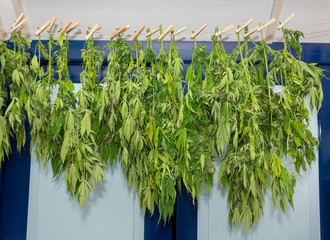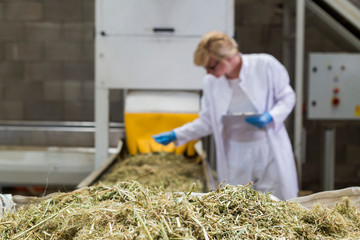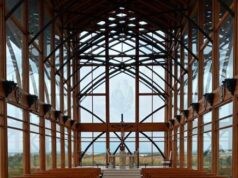Per Jeff LaBerge, a San Diego-based entrepreneur in the hemp and CBD industry, harvesting hemp is an important stage in CBD production. This is because the presence of molds and mildews can drastically lower the value of hemp flower or biomass; thus, making timely and efficient harvest extremely vital for ensuring quality products.
Mr. LaBerge finds that there are many people who would like to learn more about integral processes involved in the manufacturing of CBD products, especially as the space has experienced a boom within the past few years.
In this article, Jeff LaBerge explores hemp drying and important factors impacting the process.
Facilitating Weekly Content Testing for Quality Assurance
Jeff LaBerge of San Diego mentions that weekly testing of CBD content will inform the grower when the harvest must be initiated. Additional tests for minor cannabinoids, terpenes, chemical residue, mold, and heavy metals can cost $300 or more, but the cost is well worth it and these tests are highly recommended for growers seeking premium pricing.
Along with tests, there are visual clues on the hemp bud that growers should monitor to tell if hemp is ready for harvest. Once trichomes on the hemp bud shift from white to amber, it is time to take them down.
Timing the Harvest
According to Jeff LaBerge, weather also will be crucial at harvest time, which coincides with the storm season in many parts of the country. Growers can have a better time drying hemp flower if they bring it in before the arrival of a storm. This is often the time when adequate labor is crucial.
Mr. LaBerge has heard reports of growers that had a wonderful crop of hemp floral biomass but suffered large losses as a result of not harvesting in time. This was because their two person team at the time was not adequate for the amount of harvesting that needed to be completed.
Jeff LaBerge of San Diego stresses the importance of labor management, and he mentions that this factor is a massive reason why industry professionals tend to suggest that first time hemp growers for the CBD market begin with one acre or less.
Growers must be diligent about keeping track of the man hours required to complete the harvest. Maintaining sharp tools throughout harvesting will also save time and energy across the board.
Moving Hemp to Drying Facility
Mr. LaBerge says that once hemp is harvested, growers must immediately move the floral biomass to a drying facility. The area must be enclosed, out of direct daylight, and well oxygenated for optimal results. Many growers use numerous fans and have them blowing constantly, as ventilation is crucial.
Ideal temperatures for drying measure 60 to 70 degrees F at 50% humidity. Jeff LaBerge of San Diego believes that hemp growers should not dry their floral biomass at high, uncontrolled temperatures, like they may with tobacco driers. The reason being high temperatures dry the hemp too quickly and will result in significant cannabinoid and terpene losses. A slow dry with high air flow can cure the hemp, resulting in a higher quality end product.
Over the course of his career within the hemp and CBD industry, Mr. LaBerge has spoken with numerous farmers and says it is tough to estimate the sq. footage of drying house required per plant. One farmer, employing a flue-cured tobacco with 800 sq. ft, said they can dry one acre of plants (approximately 1,350 plants) in three days. Another farmer was ready to dry around 1.5 acres price of hemp (plant variety not stated) in a 2,500 sq ft barn.

According to Jeff LaBerge, hanging entire plants lengthwise on wires within the drying barn is a common practice, especially when space is limited. This method can be employed when producing biomass for extraction. However, it is not recommended when growing for flower because as the plants dry, the branches droop down like a closing umbrella.
That closing umbrella leads to less air flow to the middle of the hemp plant, which can allow mildew and mold to grow in this center portion. Jeff tends to advise growers to remove the individual branches from the hemp plant and suspend branches on the drying wire, not whole plants. This step can be labor intensive; however, it can minimize mold and mildew.
In Conclusion
Many who do not have formal education or training within the hemp industry are often surprised by the great deal of work that goes into growing and drying quality hemp that can be used for a variety of products.
Jeff LaBerge of San Diego explains that the drying process is a labor of love for professionals who remain dedicated to ensuring that hemp is properly tested, harvested at optimal times, and dried in the most efficient and least damaging ways possible. This, undoubtedly, helps to keep the industry on course producing hemp for sustainable industrial and medicinal uses.









